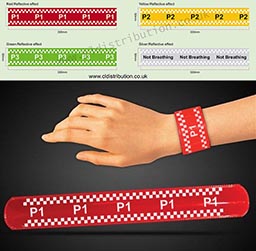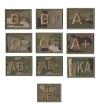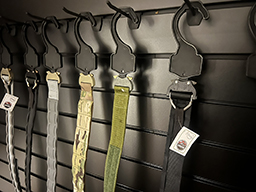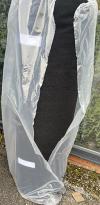Casualty labelling following triage (NHS TEN SECOND Triage Slap Bands)

Once a casualty has been triaged it is necessary to ensure that the assigned priority is communicated to further responders to ensure casualties are dealt with in the order of priority and avoid duplication of effort.
Generally, this is achieved by placing a form of labelling onto the casualty and colour coding their priority. To be as effective as possible, triage labels should be highly visible, should use the standard categories (shown in table below) and should be easily and firmly secured to the patient. The label must also allow the casualty’s priority to be altered as their condition changes.
For general retail the bands are available here
For companies and Public Services trade prices are here
|
Priority |
Colour |
Description |
|
1 – Immediate |
Red |
Requires lifesaving treatment immediately and has time critical life-threatening injuries |
|
2 – Urgent |
Yellow |
Requires significant intervention as soon as possible Injured or unwell and are unable to walk |
|
3 – Delayed |
Green |
Requires medical intervention but not with any urgency Can walk to treatment |
|
Dead (MITT only) |
Black |
Deceased |
|
Not breathing (TST only) |
Silver |
Breathing not detected |
Ten Second Triage (TST)
Simple labelling that indicates the priority of the casualty should be used as part of the TST process to communicate to further responders and ensure resources are directed appropriately. Keeping a log/tally chart of the number and severity of the casualties that have been triaged also assists in the allocation of resources and communication between emergency services.
Options for labelling include the use of bands colour coded corresponding to the triage category colour. The use of coloured pegs could be considered by non-emergency service first responders as an alternative initial labelling.
Emergency service responders must use a labelling system for TST that incorporates the checked border to distinguish from NHS Major Incident Triage Tool labelling.
Recommendations for triage bands
Size – 300x50mm.
Memory metal core encased within low light fluorescent reflective coloured material (PVC or similar, latex free).
The bands should be flexible so they wrap around a limb (wrist preferred) so they can be pulled straight but snap around a limb if ‘slapped’ against the limb, and can then be straightened again and reused multiple times if required (reuse for training only).
P1 red band with reflective white checked border and P1 in white font 5 times.
P2 yellow band with reflective white checked border and P2 in black font 5 times.
P3 green band with reflective white checked border and P3 in white font 5 times.












